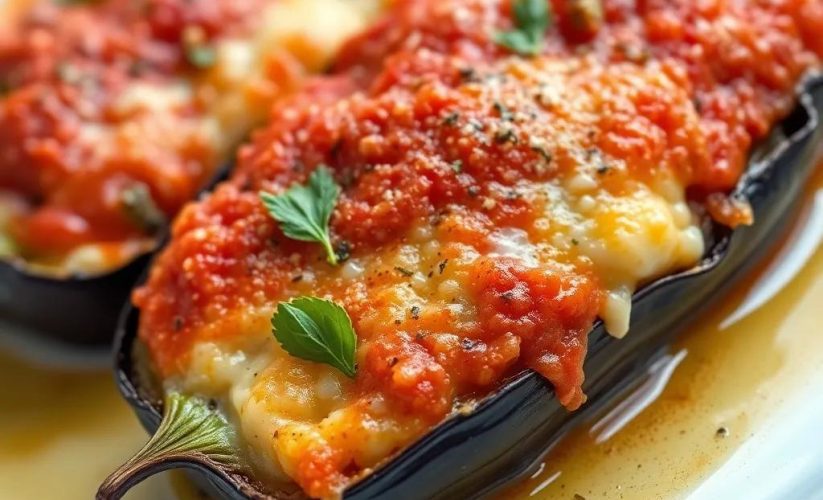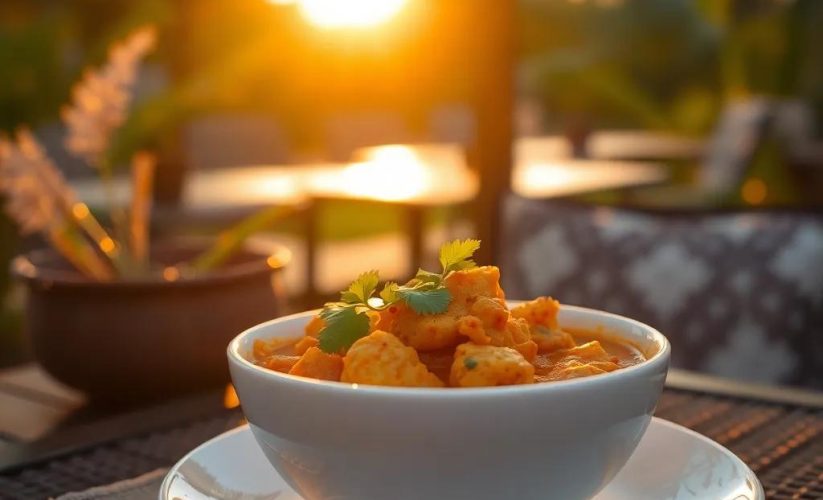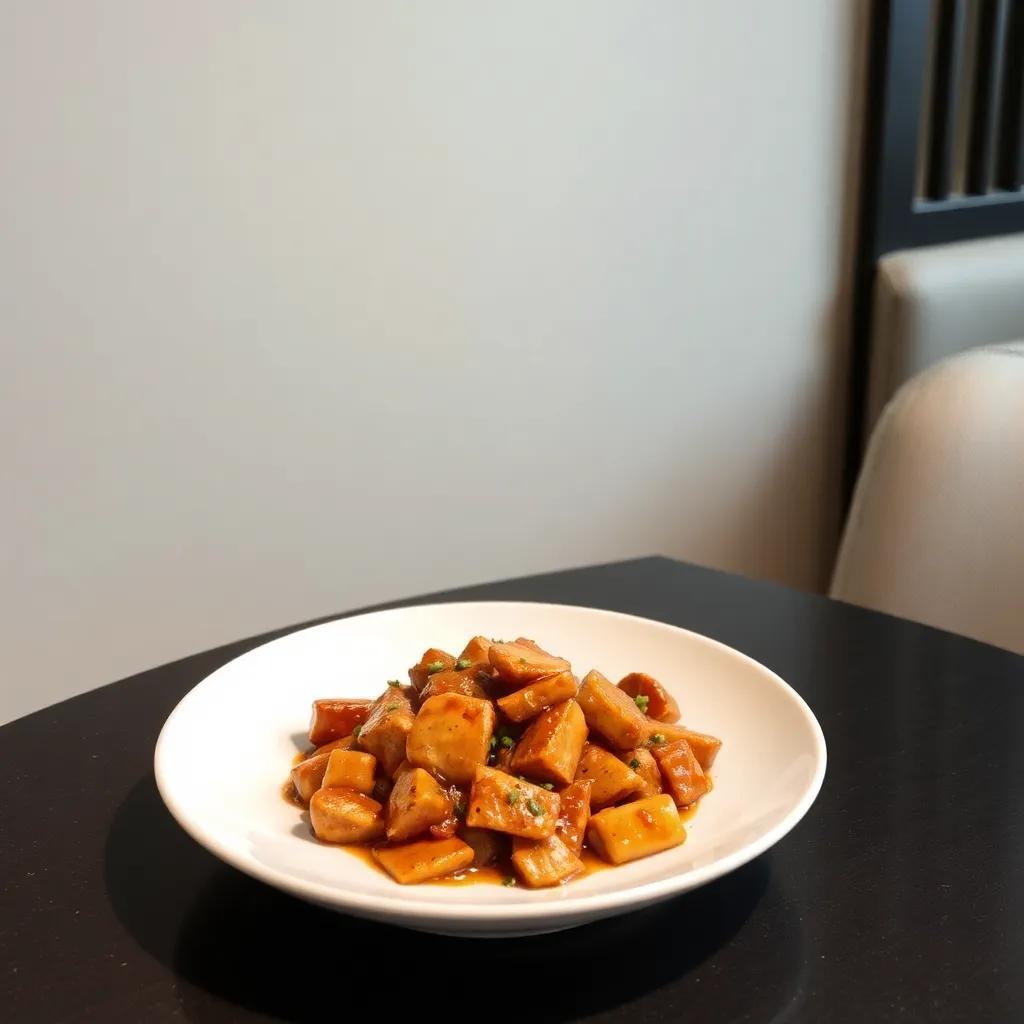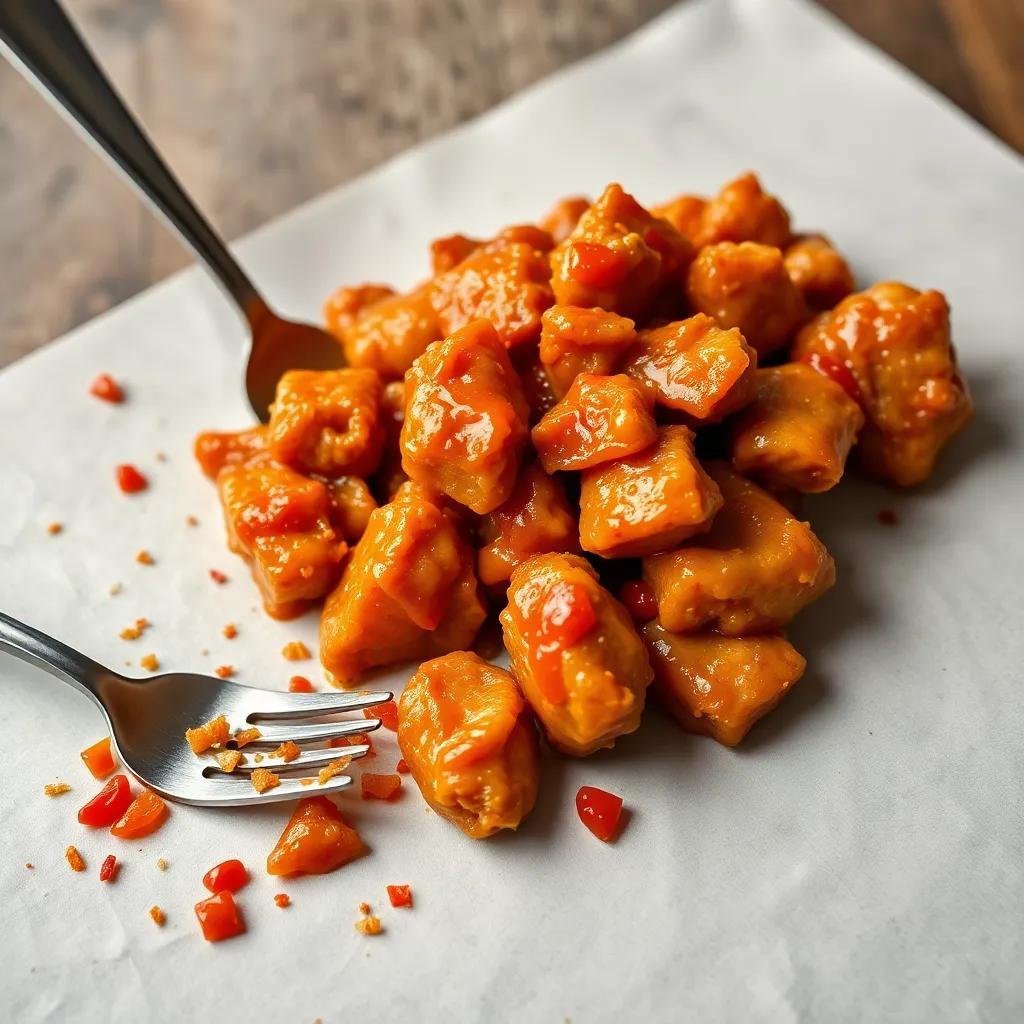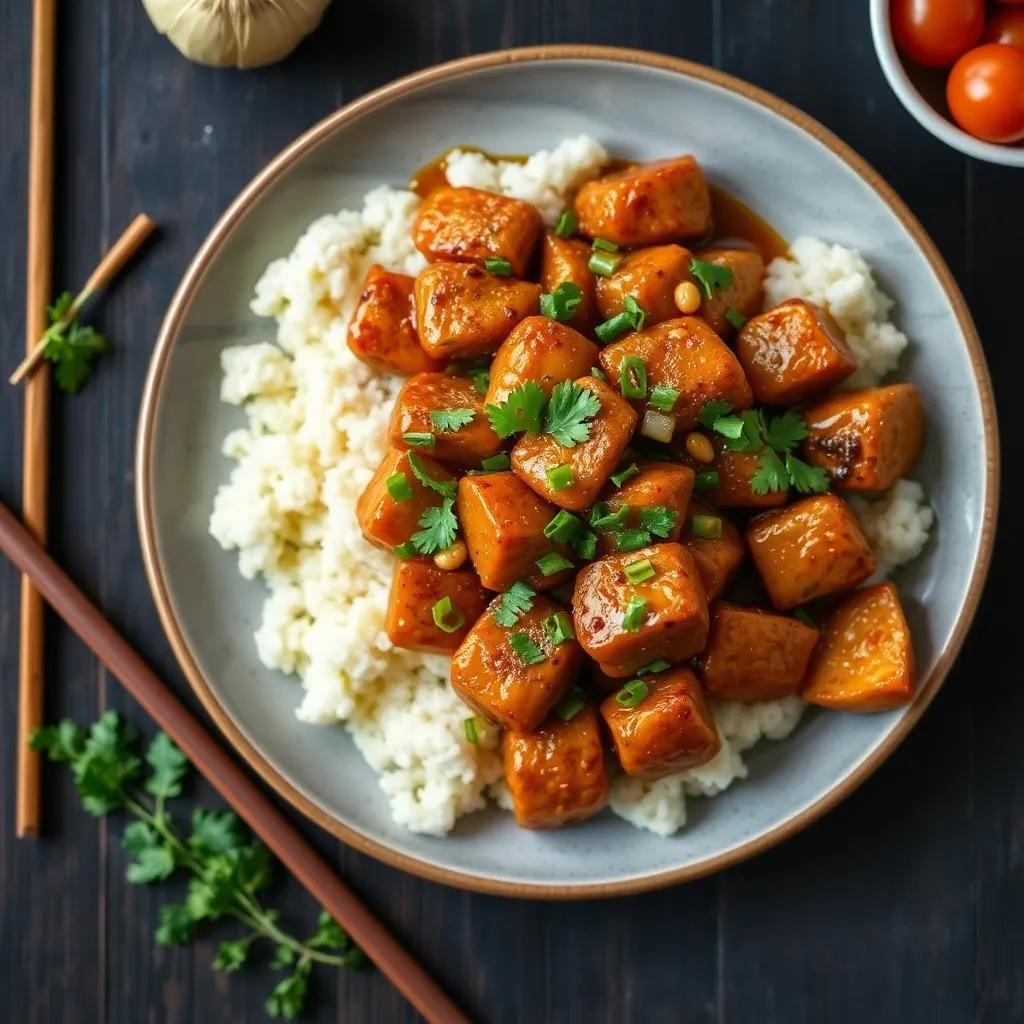Master the Art of Mapo Tofu: Easy, Authentic & Gluten-Free Recipe
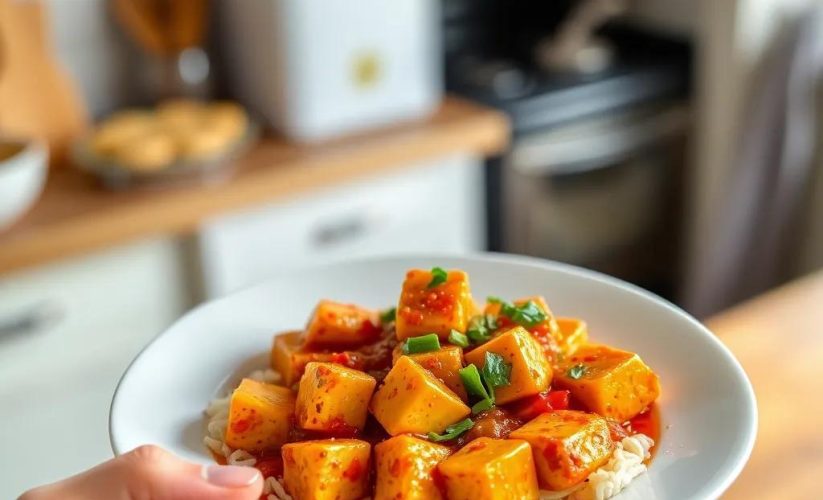
Master the Art of Mapo Tofu: Easy, Authentic & Gluten-Free Recipe
🌍 Cuisine: Sichuan (Chinese)
⚙️ Difficulty: Medium
Ingredients
Nutrition Facts
320 kcal
Instructions
- Prepare all ingredients: cut the silken tofu into 1-inch cubes, mince garlic and ginger, chop green onions separating white and green parts.
- Heat vegetable oil in a wok or large skillet over medium-high heat.
- Add the white parts of the green onions, minced garlic, and ginger; stir-fry until fragrant, about 30 seconds.
- Add the ground pork and cook until browned and no longer pink, breaking it apart with a spatula.
- Stir in the spicy fermented broad bean paste (Doubanjiang) and fermented black beans (if using), and chili powder; cook for 1-2 minutes releasing their aroma.
- Carefully add the chicken broth and bring to a simmer.
- Gently slide in the tofu cubes, being careful not to break them. Let simmer for 5 minutes to absorb flavors.
- Stir the cornstarch slurry again and slowly pour into the wok, gently stirring to thicken sauce evenly.
- Add toasted Sichuan peppercorn powder, sesame oil, and salt to taste. If using, sprinkle white pepper powder and mix gently.
- Turn off the heat and sprinkle the green parts of the green onions on top.
- Serve hot with steamed rice or gluten-free noodles.
Serving Suggestions
- Serve Mapo Tofu over freshly steamed jasmine or short-grain rice for a comforting meal.
- Pair it with sautéed or steamed leafy greens such as bok choy or spinach for balance.
- Accompany with gluten-free chili oil or pickled vegetables to enhance the spicy flavors.
- Top with extra toasted Sichuan peppercorns for additional numbing sensation.
- Enjoy alongside a simple cucumber salad dressed with rice vinegar to cool the palate.
- For extra protein, serve with an egg drop soup or a side of steamed eggs.
- Use as a flavorful topping for gluten-free rice noodles for a variation on texture.
Table of Contents

Intro
Mapo Tofu is a dish that effortlessly bridges bold flavors with comforting textures, making it a standout choice for both weeknight dinners and special occasions. This recipe invites you to explore the iconic taste of Sichuan cuisine without the intimidation—its balanced blend of spice, savory depth, and a subtle numbing sensation makes for an exciting cooking experience that’s surprisingly approachable. Whether you’re seeking a vibrant meal to warm up a chilly evening or aiming to impress friends with a genuine yet easy-to-make Chinese classic, this dish delivers on all fronts.
What makes this version especially delightful is how it embraces authenticity while being mindful of dietary needs like gluten-free living, broadening who can enjoy its rich, complex flavors. Mapo Tofu’s lively combination of textures—from silken tofu’s creamy softness to the hearty bite of ground meat—and aromatic layers of spice create a satisfying harmony that’s both comforting and invigorating. Perfect paired with fluffy steamed rice or gluten-free noodles, it’s a versatile main course that sparks the senses and brings a slice of Sichuan’s culinary heritage right to your table.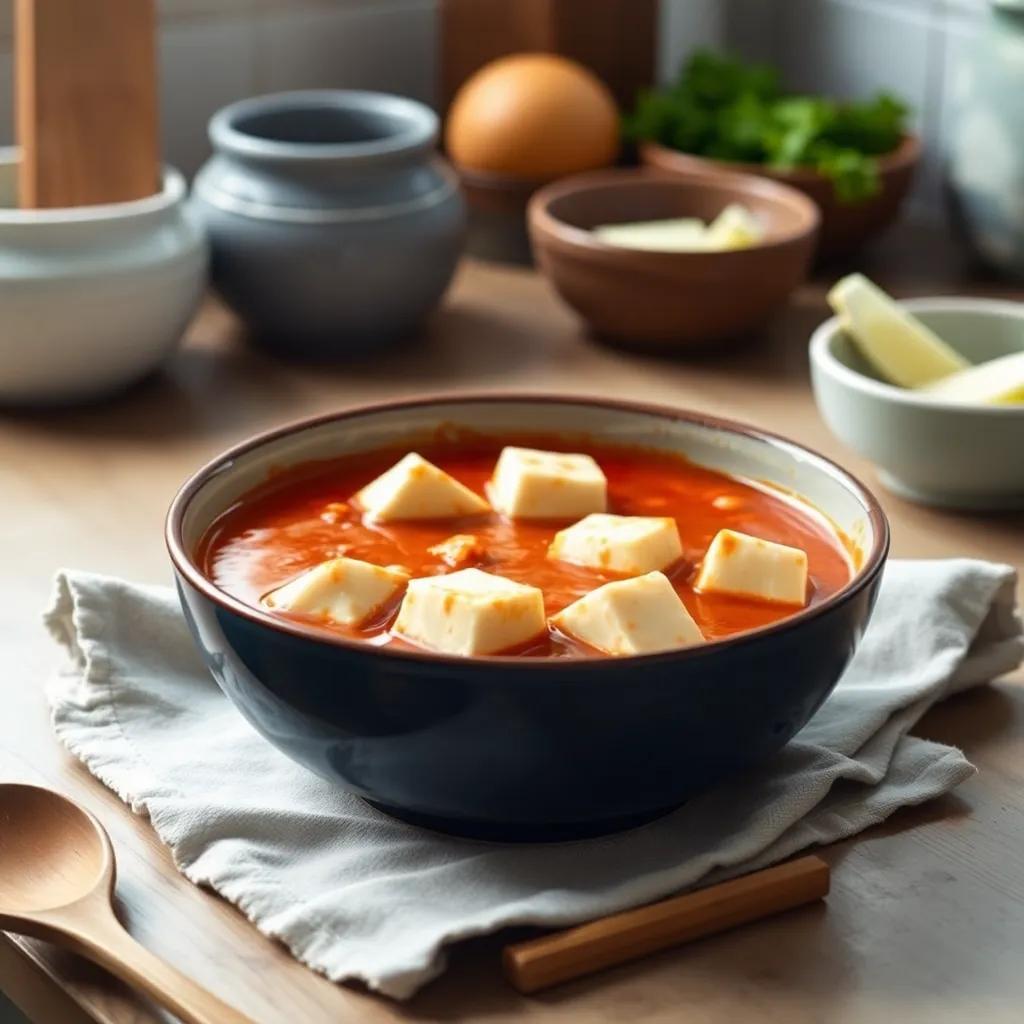
Ingredient Notes
When it comes to crafting an authentic Mapo Tofu, a few key ingredients take center stage, each bringing depth and character to the dish. Understanding their roles and how to select or substitute them can elevate your cooking and ensure delicious results every time.
Doubanjiang (Spicy Fermented Broad Bean Paste)
At the heart of Mapo Tofu’s vibrant flavor is doubanjiang, a fermented chili bean paste that infuses the dish with umami, heat, and a subtle salty tang. This ingredient is traditionally made from broad beans and chili peppers, giving it a pungent, complex taste that defines Sichuan cuisine. When shopping, look for a high-quality doubanjiang labeled gluten-free if required, since some brands may include wheat. It’s often available at Asian grocery stores or online. If unavailable, try a combination of fermented miso paste with chili oil as a last-minute stand-in, but expect a milder and less nuanced flavor.
Silken Tofu
The silky softness of silken tofu provides the signature creamy texture that contrasts beautifully with the spicy, robust sauce and savory meat. It’s delicate, so handle gently to keep the cubes intact during cooking. When buying, choose fresh tofu with minimal packaging liquid to avoid dilution of flavors. If you can’t find silken tofu, a soft or medium tofu variant can be used, but firmer tofu changes the mouthfeel and requires a shorter simmer to prevent dryness.
Sichuan Peppercorns
This unique spice delivers the famous “má” — a tingling, numbing sensation that differentiates Sichuan heat from ordinary chili spiciness. Toasted and ground Sichuan peppercorn powder adds a fragrant citrusy note and a mild numbness that balances the chili’s fire. These peppercorns can be tricky to find outside specialty stores, so consider ordering from reputable online spice vendors. If you don’t have them on hand, the dish will still be tasty but miss that iconic numb-spice harmony.
Fermented Black Beans (Douchi, optional)
This savory ingredient contributes an extra layer of complexity and depth, enhancing the meaty and spicy flavors with gentle bitterness and saltiness. Though optional, douchi is worth including for a more authentic taste. Choose whole fermented black beans that you rinse and lightly crush before use. If unavailable, a small splash of soy sauce (gluten-free tamari if needed) can mimic the savory profile but won’t fully replace the unique character of douchi.
By paying close attention to these ingredients, you capture the essence of Mapo Tofu—from the fiery depth of doubanjiang to the delightful numbing kick of Sichuan peppercorns—offering an authentic experience that’s just as comforting as it is exciting.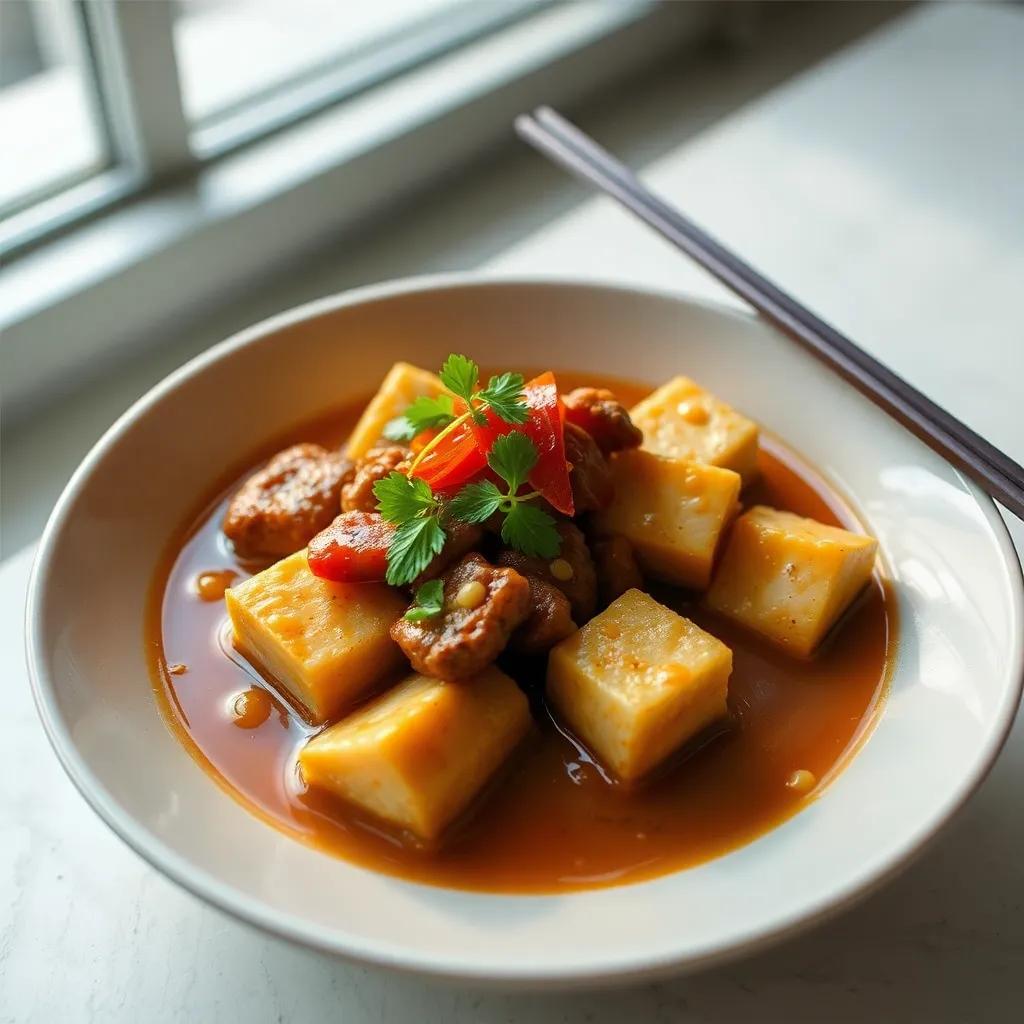
Tips & Variations
Mastering Mapo Tofu means embracing both its bold flavors and the flexibility that makes it a beloved dish worldwide. Here are some pro tips and creative variations to help you tailor this recipe perfectly to your taste and dietary preferences:
- Handle Tofu Gently: Silken tofu is delicate and prone to breaking apart. To keep those perfect cubes intact, use a wide spatula or spoon to gently slide the tofu into the pan. Minimizing stirring once the tofu is in the sauce preserves its creamy texture and visual appeal.
- Adjusting Heat Levels: Sichuan cuisine is known for its bold spiciness and numbing sensation, but you can easily control the heat. If you prefer a milder dish, reduce the amount of doubanjiang and chili powder, or swap them for milder chili pastes. For fans of extra spice, add fresh chopped chilies or a drizzle of gluten-free chili oil right before serving.
- Vegetarian and Vegan Options: To transform this into a vegan dish while keeping deep umami flavors, swap ground pork for finely chopped mushrooms (shiitake or cremini) or crumbled firm tofu pressed to remove excess moisture. Use vegetable broth instead of chicken broth, and ensure your doubanjiang and other condiments are vegan-friendly.
- Protein Variations: While ground pork is traditional, feel free to experiment with ground beef, turkey, or even minced chicken to suit your family’s preferences. Each brings a slightly different texture and flavor profile, offering a fresh spin on the classic.
- Gluten-Free Swaps: Always double-check that your doubanjiang and soy sauces (or tamari) are labeled gluten-free since many brands use wheat. If you can’t find gluten-free doubanjiang, consider blending gluten-free miso paste with chili paste to mimic the savory depth with less risk of gluten.
- Add Texture and Aroma: For an added layer of flavor, briefly toast the fermented black beans in the oil with garlic and ginger before adding meat. You can also finish with a sprinkle of toasted sesame seeds or chopped roasted peanuts for a delightful crunch.
- Serving Ideas: Beyond steamed rice or gluten-free noodles, try spooning Mapo Tofu over quinoa or cauliflower rice for a low-carb twist. For a fusion approach, use it as a topping on baked sweet potatoes or in lettuce wraps, turning it into a handheld delight.
- Make Ahead: Since the flavors deepen with time, Mapo Tofu can be made a few hours in advance or even the day before. Reheat gently on low heat to avoid breaking the tofu, and add fresh green onions just before serving to maintain brightness.
These tips and variations empower you to make Mapo Tofu your own, whether you’re seeking comfort food, entertaining guests, or accommodating dietary needs without sacrificing an authentic experience.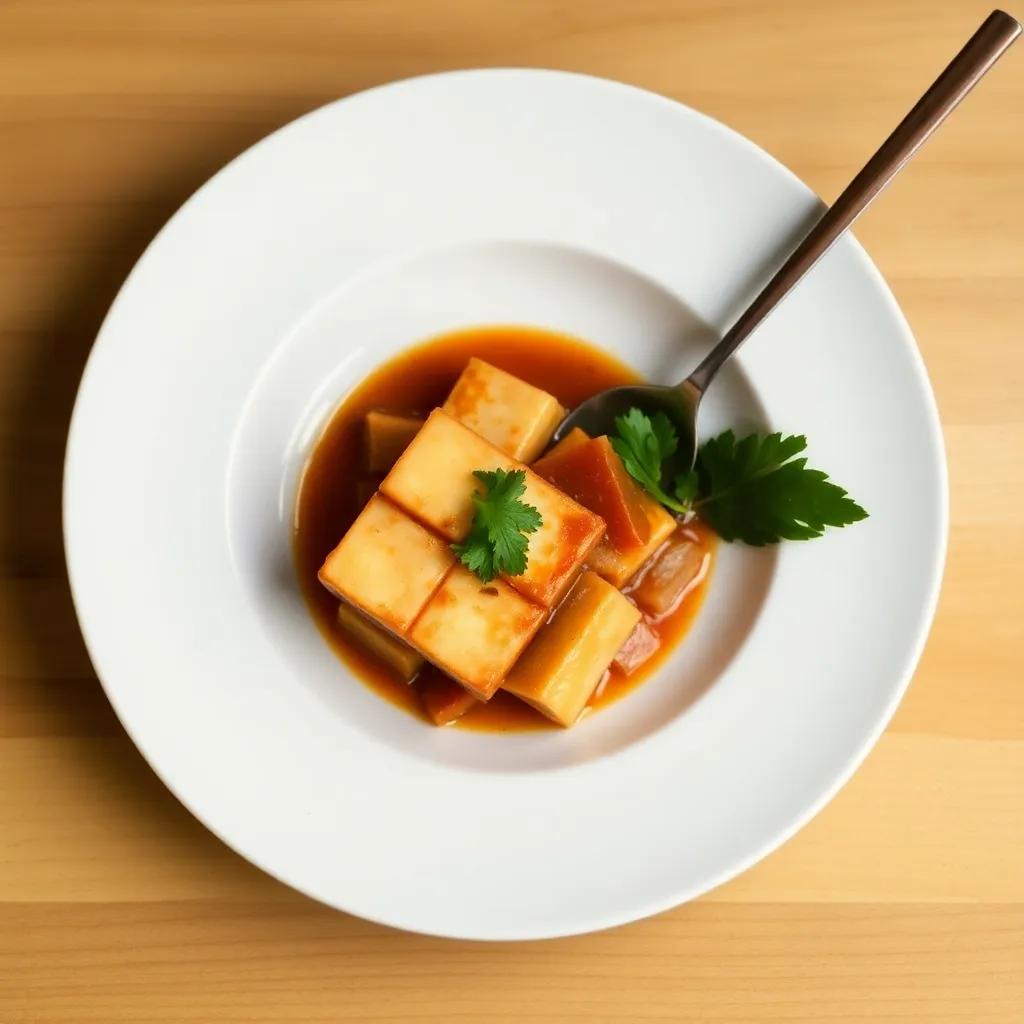
Leftovers & Storage
Storing your Mapo Tofu leftovers properly ensures you can enjoy the bold, comforting flavors again without losing that signature silky texture or spicy kick. Because silken tofu is delicate and the sauce naturally thickens as it cools, handling leftovers with care will keep your next meal just as satisfying as the first.
For short-term storage, transfer the cooled Mapo Tofu into an airtight container and refrigerate. The dish will stay fresh and flavorful for up to 3-4 days. Keeping it sealed tightly helps prevent the tofu from absorbing other fridge odors and slows down moisture loss, which can alter the texture. If you notice the sauce has thickened too much after chilling, gently stir in a splash of warm broth or water while reheating to restore the perfect saucy consistency.
If you want to freeze leftovers, portion the dish into freezer-safe containers or heavy-duty ziplock bags. Because tofu’s texture can become a bit crumbly after freezing, the silken tofu might soften further, but the flavors will still shine through beautifully. Frozen Mapo Tofu will maintain its best quality for about 1 month. To reheat, thaw overnight in the fridge and warm gently on low heat, stirring carefully to avoid breaking the tofu cubes apart.
Mapo Tofu also works well for meal prep or packed lunches. When reheating, especially in a microwave, do so in short bursts with a cover to prevent drying out, and add a little broth if needed to rejuvenate the sauce. Including a fresh sprinkle of chopped green onions or a dash of toasted sesame oil right before serving can revive the brightness and aroma after storage.
By using airtight containers—preferably glass with tight-fitting lids—you reduce exposure to air and maintain freshness. Avoid storing near strongly scented foods to keep your Mapo Tofu’s nuanced flavors intact. Whether you’re enjoying it the next day or planning ahead for busy weeknights, following these tips will help preserve the authentic taste and comforting texture of this classic Sichuan favorite.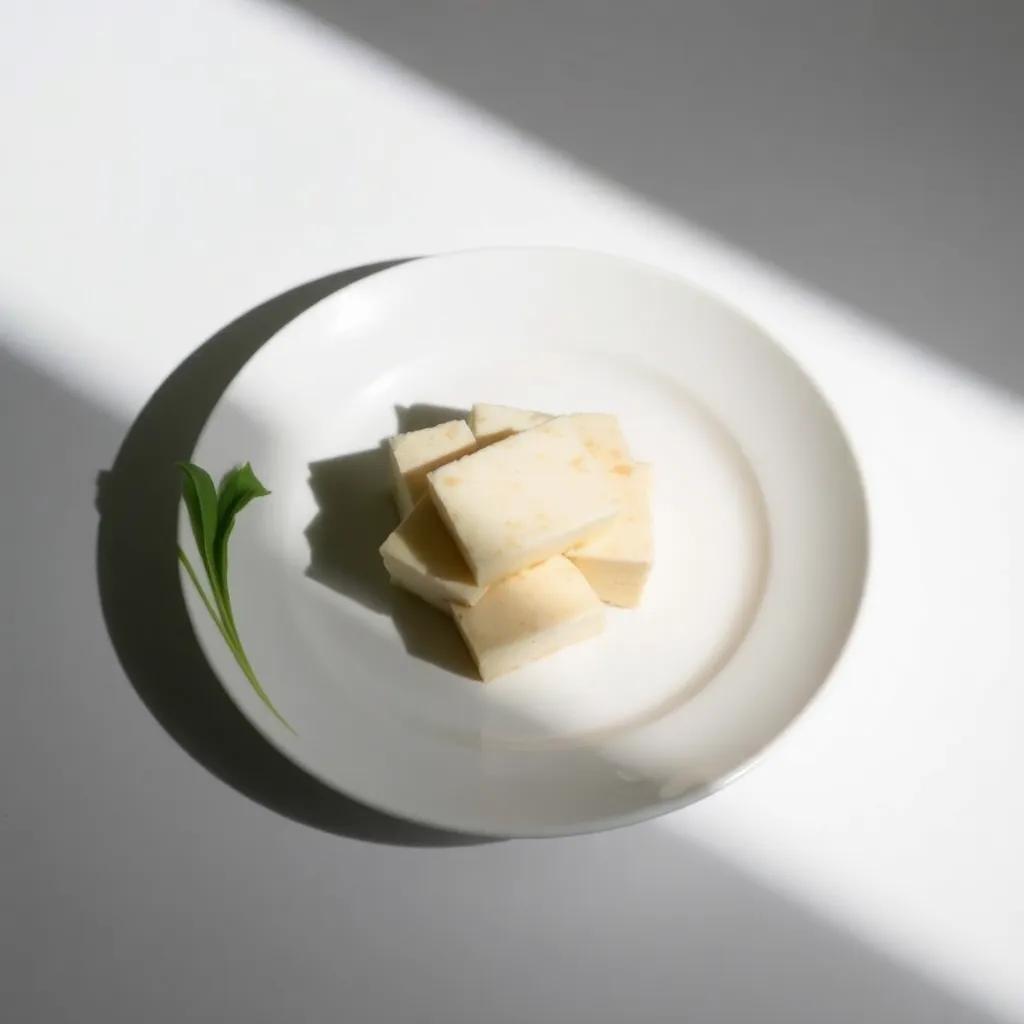
Behind the Recipe
Mapo Tofu is more than just a vibrant dish filled with fiery flavors and silky textures; it carries with it a rich cultural heritage rooted in the bustling kitchens of Sichuan province in China. The name “Mapo” roughly translates to “pockmarked old woman,” reportedly honoring the original creator—an elderly woman known for serving this bold, comforting tofu stew to hungry laborers in Chengdu during the late 19th century. This backstory hints at the dish’s humble yet soulful beginnings: a simple, hearty meal designed to satisfy both appetite and spirit through its combination of spicy heat, numbing Sichuan peppercorns, and deeply savory fermented bean pastes.
Over time, Mapo Tofu evolved from street food favored by local workers to a beloved staple in Chinese restaurants worldwide, symbolizing Sichuan cuisine’s signature balance of “mala”—the unique blend of mala, or “numbing-spicy” sensations. Its rise in popularity reflects not only the allure of complex, layered flavors but also the accessibility of ingredients and the relatively quick cooking time, making it a dish that transcends borders and culinary skill levels.
On a personal note, many cooks—myself included—find that preparing Mapo Tofu becomes a kind of ritual, where patience and attentiveness to delicate tofu cubes meet the joyful release of stirring in vibrant chili pastes and peppercorn aromas. The act connects the home cook with generations of food lovers who have cherished its warming embrace. This recipe, adapted to be gluten-free and approachable for modern kitchens, is an invitation to experience that same connection—celebrating tradition while welcoming innovation to the table. Whether shared with family after a long day or prepared as a centerpiece for gatherings, Mapo Tofu’s story is one of comfort, culture, and culinary passion made simple.
FAQ
Can I use a different type of tofu for this recipe?
How can I make this recipe spicier or milder?
Is this Mapo Tofu recipe suitable for gluten-free diets?
What’s the best way to store and reheat leftovers?
Can I freeze Mapo Tofu for later?
Are there any good ingredient swaps if I’m allergic to garlic or ginger?
Can I customize this recipe with vegetables or protein additions?
Final Thoughts
Mastering the art of Mapo Tofu opens the door to a vibrant world of bold flavors and comforting warmth—all while keeping things easy and gluten-free. This recipe brings the authentic taste of Sichuan cuisine right to your kitchen, making it a perfect go-to for anyone craving something both spicy and satisfying.
Give it a try, and don’t be shy about sharing your experience! Whether you have a fun twist on the dish or just want to let us know how it turned out, drop a comment, rate the recipe, or spread the word. We can’t wait to hear your culinary adventures with this classic favorite!

